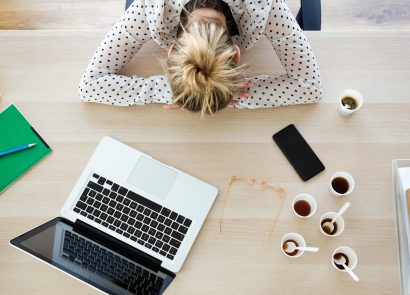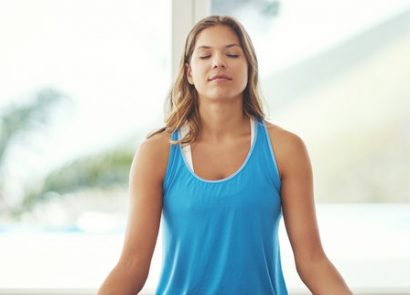The kids need picking up, the house could do with a once over and you still haven’t written that report for Monday morning – it’s been a long week. Besides, you’ve already squeezed in that regular yoga class so that’s enough, right?
Hmm, not quite. Whatever your reason (we won’t call it an excuse), we’ll bet our gym membership that your fitness regime could do with a shake-up. “People make the mistake of slogging it out in the gym for hours and endlessly dieting seeing little results,” Dave Kyle, UK head trainer at Les Mills (lesmills.com), tells us. So although you’re a pirouette pro at that ballet class, it’s time to step it up. “It’s important to find something you enjoy, whether it’s dancing, the gym, online workouts, or a sport,” says personal trainer Christina Howells (thatgirllondon.com). Give your body exactly what it needs, when it needs it, to reap the rewards of that hard earned workout – no matter what your age.
YOUR 30s
TARGET: BUILD MORE MUSCLE
WHY? “Loss of muscle mass and strength starts to decrease in our 30s, which has an immediate slowing effect on your basel metabolic rate (the number of calories you burn at rest),” Christina explains. “This decrease can be seriously slowed down by increasing muscle and keeping your metabolic fire burning with regular meals.”
HOW: “Your metabolism is directly correlated to your lean muscle mass so you can counteract the decline through HIIT training classes,” Dave advises. But what about diet? “Eating a balanced breakfast and lunch is a good place to start helping to balance blood sugar and prevent food cravings during the day,” Christina says.
TARGET: NO MORE DIETS
WHY? We know dieting doesn’t work, as in “I will start tomorrow.” Although you may lose pounds initially, it will inevitably be water, you’ll crave what you can’t have, slow your metabolism and are likely to regain the weight once the diet ends.
HOW: “It’s time to understand a healthy body starts with a healthy mind and you need to get your emotions in check surrounding food,” Christina tells us. “Diets don’t give our bodies the vitamins and stimulation it needs. Start making lifestyle changes and fitness habits for life rather than yo-yoing your way through your 30s.”
TARGET: PULL TOGETHER
WHY? It’s a popular decade to start a family, which can dramatically effect your fitness. “Pelvic floor muscles become weaker after having a baby,” Christina explains. “They’re like a trampoline and stretch when something pushes down on them. However, during pregnancy the muscles bear weight for a long time and can become over-stretched.”
HOW: “It’s important to keep these muscles strong throughout your 30s and 40s prior to menopause when hormone changes can weaken them further. Pilates can be incredibly helpful to pull everything back together,” Christina explains.
YOUR 40s
TARGET: FIGHT THE FLAB
WHY? Although the weight may become harder to keep off, don’t opt for quick fixes. “This is not the time to start a strict diet which will only serve to shut down your metabolism,” Christina says.
HOW: “Instead, make lifestyle changes for life by ditching erratic eating, junk foods, sugar and getting some structure in your life,” Christina advises. “Start including weight-bearing exercise and yoga to keep the metabolic fire alive, bones strong and improve mobility.”
TARGET: FEEL THE BURN
WHY? It’s easy to become side-tracked but making fitness a priority is vital. “A sedentary lifestyle means focusing on flexibility is key to ensure you maintain good posture and bone health,” Dave says. “People become caught up in comfort zones doing the same thing which is why it’s important to mix up your workouts.”
HOW: “In our 40s the respiratory, diaphragm and intercostal muscles weaken, reducing lung capacity. Work these by including aerobic activity and strength training with high intensity intervals but also focusing on taking time to breath,” Christina explains.
TARGET: TAKE TIME OUT
WHY? Hallelujah! “The change in decade marks a shift in hormones and a change in lifestyle,” Dave explains. “People tend to be caught up in a busy work life and their families meaning they have less time to focus on themselves and their health takes a back seat.”
HOW: Counteract stress and decrease the risk of high blood pressure, diabetes and heart disease by making yourself a priority. “Every diary should have a daily battery recharge. Also don’t forget your friends; time out having fun can boost your self-esteem and mood,” says Christina. You don’t have to tell us twice!
YOUR 50s
TARGET: CUT THE CALORIES
WHY? In our 50s, the change in hormones due to menopause decreases muscle mass meaning we’re more likely to gain weight around our middles.
HOW: “Unless you’re highly active, try reducing your calories by 200 a day compared to in your 40s and focus on fat-burning foods such as almonds, eggs, oatmeal, wholegrains and berries,” Christina suggests.
TARGET: EXERCISE SMARTER
WHY? Being in your 50s certainly doesn’t mean you have to hang up your trainers and head into exercise retirement. Quite the opposite in fact! “Continue to build strength sensibly as osteoporosis can occur if you haven’t got the muscle memory,” Dave warns. But how you do this is also important. “The body doesn’t recover as fast so vary your activities to avoid working the same muscle groups.” Christina says.
HOW: “Think beyond cardio. Yes, this is an important factor but don’t skip the weight-bearing strength exercises and flexibility components helping you to move better and stand taller. Lowerimpact activities can be more suitable, such as walking, hiking, swimming, zumba, cycling and the elliptical trainer,” Christina suggests.
TARGET: SUPPLEMENT
WHY? Although we aim to get our vitamins from good food supplies, as we get older, our body doesn’t absorb minerals as effectively. “The body absorbs less calcium from foods, therefore our bones become less dense,” Christina explains.
HOW: The most important supplements at this time are omega 3, which decreases inflammation but also helps with menopausal moods, vitamin D and calcium.
}


















